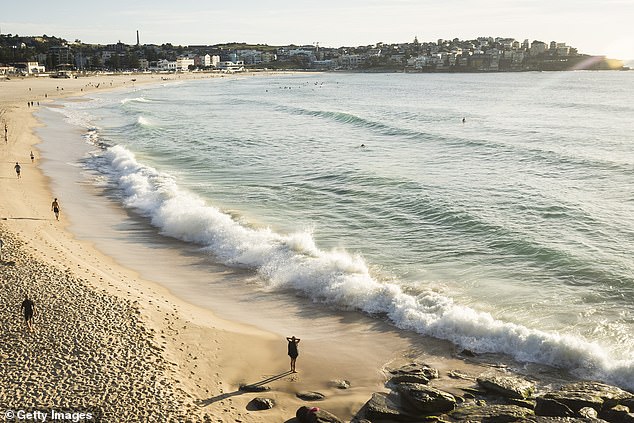How to spot a rip: Why this Gold Coast beach photo has Aussies shocked ahead of summer
A woman has issued a stern warning about the brutal nature of the ocean at Australian beaches and urged beachgoers to be careful of rips as they head into summer.
Angie James from New Zealand visited the Gold Coast and took a photo from her balcony.
It may look like an ordinary photo, but the photo actually shows a clear high tide pushing the water back into the sea, marking the most dangerous place for swimming. The worst part is that the rip seems like the calmest place to get into the water.
‘For those who enter the ocean and the waves, wherever you go in the world. This is very simple. You can see a rip current,” Angie wrote.
The crack can be thought of as a water passage or ‘river of the sea’ between breaking waves. The current is so strong that even the best swimmers would struggle to fight against a rip.
The image shows a passage of tidal waves pushing the water back into the sea, marking the most dangerous places for swimming
‘Unfortunately, that’s where it seems easiest and safest to go into the sea. This is because the rip current circles and recedes. That’s why waves don’t roll IN,” she continued.
Angie warned to ‘never go into the sea here’ and to always look out for cracks.
She also explained what to do if you’re stuck in a crack.
“If you are already in the sea and get caught in a rip current (you will know because you will suddenly be removed from your location and it will be impossible to swim against it), do not panic,” she wrote.
‘Swim OVER, not against the current. For example, instead of trying to swim to shore while being pushed out, swim parallel to the beach and be able to get out.
‘Then you can swim to shore. Inform friends or family who are visiting the beaches this summer. Pay attention to your safety.’

The tide can be thought of as a passage of water or ‘river of the sea’ between breaking waves. The current is so strong that even the best swimmers would struggle to fight against a rip (stock image)
According to National Oceanic and Atmospheric AdministrationThe rip currents can be narrow or hundreds of feet long, and are often referred to by lifeguards as “drowning machines.”
Angie’s post quickly caught the attention of thousands of people and was liked more than 32,000 times.
“You learn something new every day,” one wrote, while another said: “Good advice as our beaches are notorious for their rips.”
One man shared his ‘near death’ experience after being swept into the ocean by a tidal wave.
“I almost drowned on January 21, on my birthday in Coolum, because I was complacent and didn’t see the obvious,” he wrote.
‘I’ve always been very fit… but this day I underestimated the ocean.’
READ MORE: Emergency Paramedic Alert: Why you should ALWAYS use water diapers on babies and toddlers in the summer
Paramedic seriously warns about tangerines and oranges: ‘Everyone needs to hear this’
